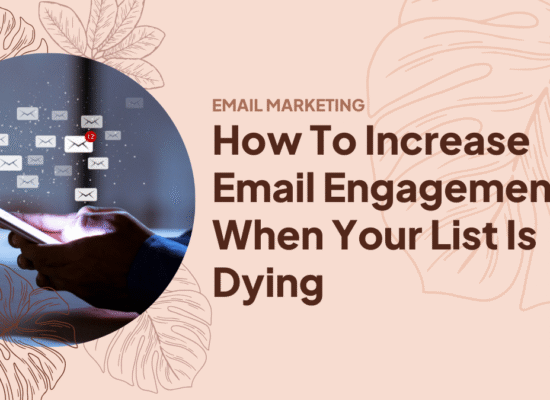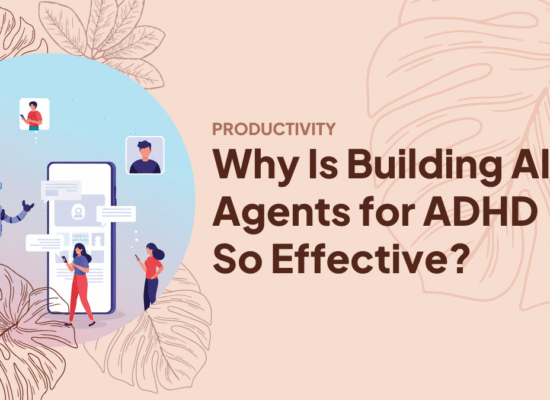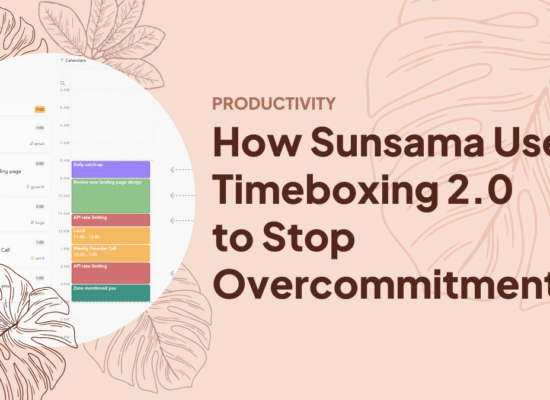Table of Contents
- Why UX Design Drives Business Performance
- Beyond Conversion: The Customer Lifetime Value Connection
- The Employee Experience Dimension
- UX as Competitive Differentiation
- Measuring UX Impact on Business Outcomes
- Implementing Effective UX in Business Strategy
- The Evolving Strategic Importance of UX
- From Design Function to Business Imperative
- Ready to Transform Your Business Through User Experience?
User experience design has transformed from a nice-to-have feature into a critical business imperative. Companies that prioritize exceptional user experiences consistently outperform those that don’t, with research showing that every dollar invested in UX brings a return of $100. Yet many organizations still view UX as primarily a design concern rather than a core business strategy.
This perspective misses the profound impact thoughtful user experiences have on virtually every business metric that matters. We’ve observed how UX investments directly influence conversion rates, customer retention, support costs, and ultimately, profitability.
Why UX Design Drives Business Performance
At its core, user experience design focuses on creating products and services that provide meaningful, relevant experiences to users. This encompasses everything from a product’s usability and accessibility to how it makes users feel during interaction. For businesses, this translates into tangible benefits that directly affect key performance metrics.
The most immediate impact appears in conversion rates. When customers encounter friction during their journey—whether navigating a complex website, struggling with a confusing checkout process, or battling an unintuitive interface—they abandon. In fact, 88% of online consumers are less likely to return to a site after a poor user experience.
This abandonment represents direct revenue loss.
Conversely, businesses that invest in user-centered design create smooth pathways to conversion. We see this consistently across industries—intuitive navigation guides users toward desired actions, streamlined forms reduce abandonment during critical conversion points, and clear calls-to-action eliminate decision paralysis.
Consider the financial impact of even small UX improvements. An e-commerce business converting at 2% might increase to 3% through targeted UX enhancements. This seemingly modest improvement represents a 50% increase in revenue from the same traffic—often amounting to millions in additional annual revenue for mid-sized companies.
Beyond Conversion: The Customer Lifetime Value Connection
While conversion improvements generate immediate returns, the long-term business impact of UX appears in customer retention metrics. Customer acquisition costs continue to rise across industries, making retention increasingly valuable from a business perspective.
User experience design plays a pivotal role in building the kind of satisfaction that fosters loyalty. When users consistently have positive, frictionless interactions with digital products, they develop emotional connections with brands. These connections translate into measurable business outcomes:
- Higher customer lifetime value emerges as customers stay longer and spend more
- Increased word-of-mouth referrals reduce acquisition costs
- Greater resistance to competitor offerings creates market stability
- More willingness to forgive occasional service failures improves resilience
The financial implications are substantial. Research shows that customers who rate companies with a high customer experience score spend 140% more compared to those who had poor experiences. This multiplier effect compounds over time, creating substantial business value from seemingly subtle UX improvements.
The Employee Experience Dimension
While customer-facing UX receives the most attention, we’ve found that internal user experiences significantly impact business performance as well. For enterprise-level organizations, employee-facing systems with poor UX create substantial hidden costs.
When employees interact with well-designed internal systems, organizations see reduced training time and costs, lower error rates in critical business processes, increased productivity through intuitive workflows, and higher employee satisfaction with reduced turnover.
The business impact often exceeds customer-facing UX improvements, particularly for organizations with large workforces. One enterprise client discovered that improving the user experience of their internal CRM system saved over 15,000 employee hours annually—equivalent to more than seven full-time positions.
These efficiency gains translate directly to improved profitability.
UX as Competitive Differentiation
Beyond specific metric improvements, user experience increasingly serves as a sustainable form of competitive differentiation. In markets where products and services have reached feature parity, the experience becomes the product.
Why is user experience design important in today’s competitive landscape? Because companies that create meaningfully better experiences can command premium pricing, reduce price sensitivity, and create barriers to customer switching. These advantages persist even when competitors attempt to copy features or match pricing.
The business advantage comes from the systematic approach to understanding and addressing user needs rather than any single design element. Organizations that build UX capabilities develop an ongoing advantage that’s difficult for competitors to replicate quickly.
This explains why market leaders across industries have significantly increased UX investment over the past decade. They recognize that feature advantages are temporary, but experience advantages can be sustained.
Measuring UX Impact on Business Outcomes
For business leaders, connecting UX investments to business outcomes is essential. Several key metrics demonstrate the return on UX investment:
Conversion rate improvements provide the most direct measure of UX effectiveness. Well-executed UX redesigns consistently show conversion rate improvements of 10-200%, depending on initial baseline performance. These improvements translate directly to revenue increases without additional marketing spend.
Support cost reduction represents another quantifiable benefit. Intuitive experiences reduce customer confusion and the need for support. Companies implementing user-centered design report support call reductions of 15-20% following UX improvements, creating substantial operational savings.
Development efficiency gains emerge when UX is integrated early in product development. Early UX investment reduces costly rework later in development cycles. Research indicates that fixing an issue in development costs 10 times more than addressing it during design, while fixing the same issue after release costs 100 times more.
SEO performance improvements occur because user experience metrics like page load speed, mobile responsiveness, and engagement metrics directly impact search engine rankings. Google’s Core Web Vitals, which measure loading performance, interactivity, and visual stability, directly affect search visibility and traffic acquisition costs.
Implementing Effective UX in Business Strategy
Understanding why UX matters to business performance is just the beginning. Implementation requires strategic commitment and organizational alignment.
Successful UX integration begins with user research—understanding your users’ needs, preferences, and pain points through interviews, usability testing, analytics review, and competitive analysis. This research provides the foundation for design decisions based on actual user behavior rather than assumptions.
Design thinking methodologies offer structured approaches to UX improvement, moving organizations through cycles of empathizing with users, defining specific problems, ideating potential solutions, prototyping promising concepts, testing with real users, and implementing refined solutions.
Cross-functional collaboration proves essential for success. UX cannot exist in isolation—it requires alignment between design teams, development resources, marketing stakeholders, business strategists, and customer support representatives. When these functions align around user-centered principles, organizations develop more coherent, effective experiences.
Working with a boutique agency specializing in user experience design can provide focused expertise and dedicated resources without the overhead of building an in-house team. These specialized partners bring industry best practices and fresh perspectives to UX challenges.
We’ve seen businesses struggle when UX remains siloed within design departments. The most successful implementations position UX as a business discipline rather than purely a design function.
The Evolving Strategic Importance of UX
As digital transformation accelerates across industries, user experience design will only grow in strategic importance. Several emerging trends will shape its evolution and business impact:
- AI and personalization enable increasingly tailored user experiences, adapting interfaces and content based on individual preferences and behaviors. Businesses that leverage these capabilities will create more relevant, engaging experiences that drive improved performance metrics.
- Voice, gesture, and mixed reality interfaces are expanding interaction models beyond screens. Forward-thinking businesses are already exploring how these new interaction patterns can enhance customer experiences and create competitive differentiation.
- Ethical design considerations including privacy concerns, digital wellbeing, and algorithmic transparency are becoming key factors in responsible UX design. Companies that proactively address these concerns will build stronger trust with increasingly discerning users.
The businesses that recognize these trends and integrate UX thinking into their strategic planning will create sustainable competitive advantages as digital touchpoints continue to multiply.
From Design Function to Business Imperative
User experience design offers perhaps the most sustainable form of competitive differentiation available to modern businesses. Its impact extends far beyond aesthetics or usability, directly affecting revenue, operational efficiency, and market positioning.
The organizations that truly understand this connection position UX as a strategic business function rather than a design discipline. They invest accordingly, measure rigorously, and integrate user-centered thinking throughout their operations.
The question is no longer whether businesses should prioritize user experience design, but how quickly and effectively they can integrate these principles into their strategic planning. As digital touchpoints continue multiplying and customer expectations rise, the businesses that deliver exceptional experiences will be the ones that thrive.
We’ve witnessed this transformation across industries. The secret hidden in user experience isn’t really a secret at all—it’s the fundamental recognition that business success in the digital age depends on creating products and services that genuinely serve human needs.
When businesses align their goals with user needs, performance metrics improve naturally. The most successful organizations have already made this connection. Have you?
Key Takeaways:
- User experience design directly impacts business metrics with every $1 invested returning $100 on average.
- Companies with high customer experience scores see 140% more spending compared to those with poor experiences.
- UX serves as sustainable competitive differentiation when features and pricing reach parity in the market.
Ready to Transform Your Business Through User Experience?
FAQs
What makes user experience design a business imperative rather than just a design concern?
UX directly impacts business metrics including conversion rates, customer retention, and support costs, making it a strategic business function.
How quickly can businesses see returns from UX investments?
Immediate improvements often appear in conversion metrics, while long-term benefits build over time through enhanced customer lifetime value and reduced operational costs.
Do smaller businesses need to invest in user experience design?
Yes, businesses of all sizes benefit from UX improvements, with boutique agencies offering scalable solutions that fit smaller business needs and budgets.






